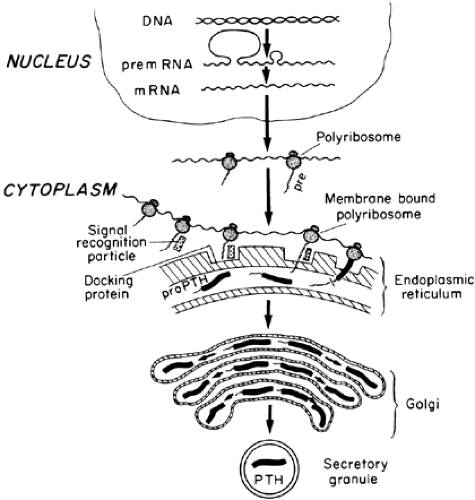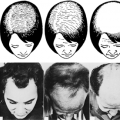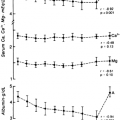BIOSYNTHESIS OF PARATHYROID HORMONE
Part of “CHAPTER 51 – PARATHYROID HORMONE“
Parathyroid hormone follows a pattern of biosynthesis and of vectorial transport through organelles of the cell that now is well established for many peptide hormones (Fig. 51-1).1,2 The major glandular form of the hormone, an 84-amino-acid, straight-chain peptide, PTH 1–84, is biosynthesized on the polyribosomes of the rough endoplasmic reticulum of the parathyroid gland. The gene for PTH encodes a precursor, prepro-PTH, that is extended at the amino-terminus of PTH 1–84 by 31 residues. The NH2-terminal, 25-residue portion, characterized by its hydrophobicity, is called the signal, leader, or pre sequence, and it facilitates entry of the nascent hormone into the cisternae of the endoplasmic reticulum.
 FIGURE 51-1. The biosynthesis of precursor and secretory forms of parathyroid hormone (PTH). Within the nucleus, transcription of the gene encoding PTH is followed by processing of the pre-mRNA through removal of intervening sequences. The mature mRNA leaves the nucleus and attaches to polyribosomes in the cytoplasm. The signal or pre-sequence of the hormone then binds to a signal recognition particle that interacts with a docking protein on the membrane of the endoplasmic reticulum, facilitating entry of the nascent peptide into the cisternae. The signal sequence is removed, leaving the precursor proPTH. The NH2-terminal hexapeptide of this molecule is then removed in the Golgi apparatus, and the mature hormone, PTH 1–84, is packaged into secretory granules.
Stay updated, free articles. Join our Telegram channel
Full access? Get Clinical Tree
 Get Clinical Tree app for offline access
Get Clinical Tree app for offline access

|


